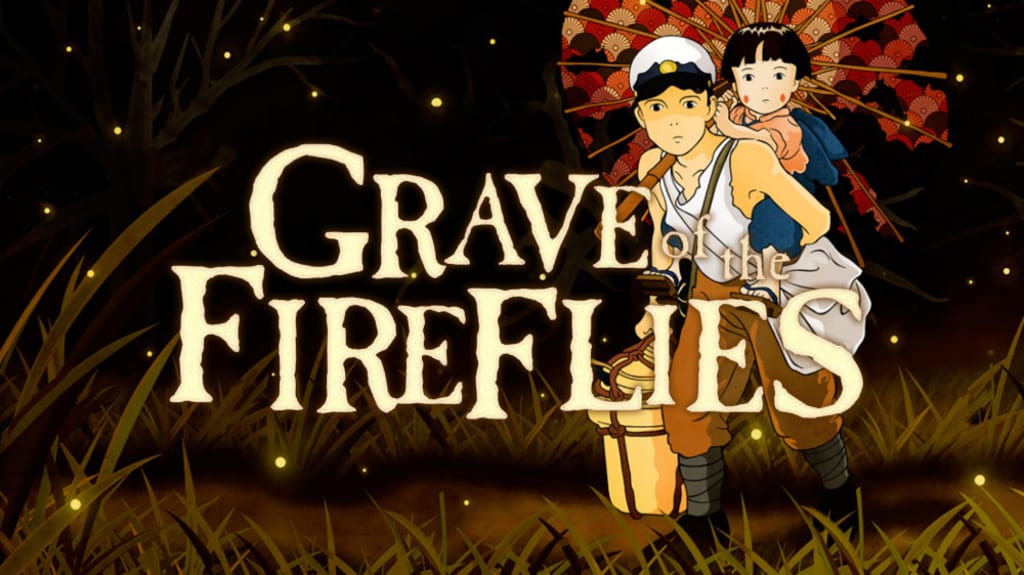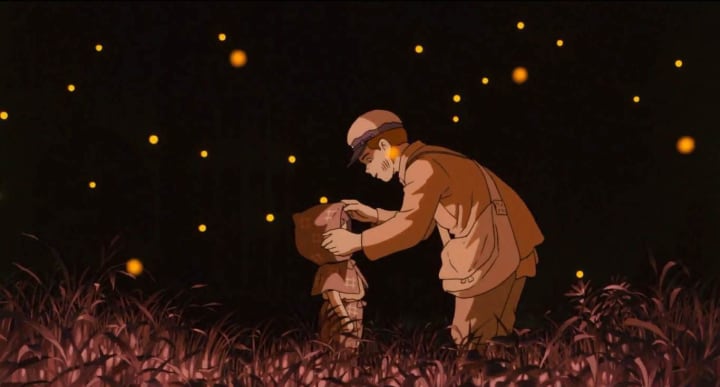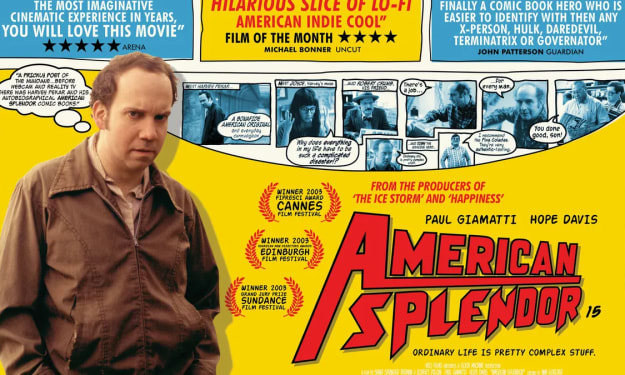Grave of the Fireflies Anime Review
The Grave of the Fireflies Anime tells the story of survival of two children during the World War II in Japan.

In the melting away long periods of The Second Great War, American planes drop napalm canisters on Japanese urban communities, causing firestorms. These bombs, longer than a metal can yet similarly large around, tumble to earth following fabric tails that vacillate behind them; they are nearly a delightful sight. After they hit, there is a second's quietness, and afterward, they explode, splashing their environmental factors with flares. In a Japanese private area, made of wobbly wood and paper houses, it is basically impossible to battle the flames.

Grave of the Fireflies
"Grave of the Fireflies" (1988) is an energized film recounting the tale of two kids from the port city of Kobe, made destitute by the bombs. Seita is a youthful teen, and his sister Setsuko is around 5. Their dad is serving in the Japanese naval force, and their mom is a bomb casualty; Seita stoops close to her body, covered with consumes, in a crisis emergency clinic.
Their home, neighbors and schools are undeniably gone. For a period and auntie takes them in, however, she's savage about the need to take care of them, and at last Seita finds a sloping cave where they can live. He gives his best to track down food, and to address Setsuko's inquiries concerning their folks. The main shot of the film shows Seita dead in a tram station, thus we can figure out Setsuko's destiny; the kid's soul joined us through flashbacks.
"Grave of the Fireflies" is a close-to-home experience so strong that it powers a reconsidering of movement. Since the earliest days, most animated films have been "kid's shows" for youngsters and families. Late energized highlights, for example, "The Lion King," "Princess Mononoke" and "The Iron Monster" have addressed more serious subjects, and the "Toy Story" films and works of art like "Bambi" have had minutes that moved some crowd individuals to tears. These movies exist inside safe limits; they motivate tears, however, not despondency.
The Grave of the fireflies is the most significant human energized film I've at any point seen." It recounts a straightforward story of endurance. The kid and his sister should track down a spot to remain, and food to eat. In the wartime, their family members are not kind or liberal, and after their auntie sells their mom's kimonos for rice, she saves much of the rice for herself.
At last, Seita acknowledges leaving their aunts home. He has some cash and can purchase food, however, soon there is no food to purchase. His sister becomes more vulnerable. One of the film's most prominent gifts is its understanding; shots are so good that we can ponder them, we witness characters in confidential minutes, air and nature lie downs a good foundation for themselves.
Japanese writers use "pad words" that are somewhere between stops and accentuation, and the incredible chief Yasujiro Ozu uses "cushion shots detail from nature, say, to isolate two scenes. "Grave of the Fireflies uses them, as well.
Isao Takahata, related to the popular Ghibli Studio, the wellspring of the best Japanese liveliness, coordinated the movie. His movies are not typically this serious, yet "Grave of the Fireflies" is in classification without help from anyone else.
The book is notable in Japan, and could with little of a stretch have motivated a true to life film. The heaviness of enhancements, viciousness and activity has troubled realistic. Movement permits Takahata to focus on the substance of the story, and the absence of visual authenticity in his vivified characters enables our creative minds more play; liberated from the exacting truth of genuine entertainers, we can all the more effectively merge the characters with our own affiliations.
Hollywood's movement has been seeking the ideal of "reasonable activity" for a really long time, although that is an interesting expression. Individuals are drawn don't seem to be individuals. They're more adapted, all the more clearly emblematic, and we can overstate their developments to impart mindset through non-verbal communication. "Grave of the Fireflies" doesn't endeavor even the authenticity of "The Lion King" or "Princess Mononoke," however it is the most practical film I've at any point seen in feeling.
The areas and foundations have attracted a style owing something to the eighteenth-century Japanese craftworker Hiroshige and his innovative supporter Here (the maker of Tin). There is extraordinary excellence in them not animation magnificence, but suggestive scene drawing, put through the channel of energized style.
There are individual snapshots of incredible magnificence. One includes a night when the kids get fireflies and use them to enlighten their cavern. The following day, Seita finds his younger sibling cautiously covering the dead bugs as she envisions her mom was covered.
There is one more succession in which the young lady gets ready "supper" for her sibling by utilizing mud to make "rice balls" and other fanciful treats. Note the timing and the utilization of quietness in a succession where they track down a dead body near the ocean, and afterward more planes show up far away overhead.
Sister singles out one more given: "There's a second where the kid Seita traps an air bubble with a washcloth, lowers it, and afterward delivers it into his sister Setsuko's really glad face, and that is the point at which I realized I was watching something uniquely great."
There are old Japanese social flows streaming underneath the outer layer of "Grave of the Fireflies," and they're made sense of by pundit Dennis H. Fukushima Jr., who finds the story's beginnings in the practice of twofold self-destruction plays. It isn't so much that Seita and Setsuko end it all unmistakably, however, that daily routine erodes their will to experience. He likewise draws a line-up between their protecting cavern and slope burial places.
Fukushima refers to a meeting with the creator, Akiyuki: "Having been the last one standing, he felt regretful for the passing of his sister. While rummaging for food, he had frequently taken care of himself first, and his sister second. Her certain reason for death was craving and would torment Nosaka for a really long time.
"Grave of the Fireflies" has been little seen. At the point when anime fans say how great the film is, no one treats them in a serious way. Indeed, it's an animation, and the children have staring in awe, yet it has a place on any rundown of the best conflict films made.
About the Creator
Sabina Writes
Medium Writer/Digital Writer/ Writing Consultant
I am a digital writer on Medium. I am also working as a part-time writing consultant. On this platform, I will publish Anime and Movies honest Reviews.






Comments
There are no comments for this story
Be the first to respond and start the conversation.